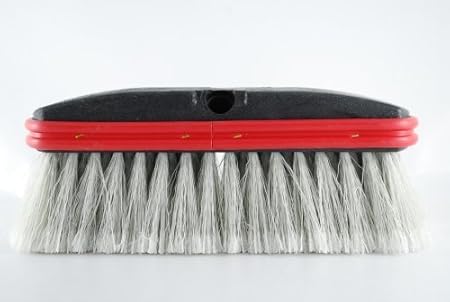The Great Outdoor Scrub Brush Lifespan: More Than Just a Quick Clean
We’ve all been there: tackling that grimy patio furniture, battling stubborn stains on the deck, or wrestling with algae-covered siding. Outdoor scrub brushes are our trusty sidekicks in these battles, but how long can we rely on them before they call it quits? The answer, as with most things, isn’t a simple number. The lifespan of an outdoor scrub brush hinges on several factors, from the materials used to the frequency and intensity of use. This detailed guide dives into the specifics, helping you understand what to expect from your brush and how to maximize its lifespan.
Material Matters: Bristles and Handles

The heart of any scrub brush lies in its bristles. The material dictates not just the scrubbing power but also the durability. Let’s break down some common bristle types:
- Natural Bristles (e.g., Tampico, Sisal): These offer excellent scrubbing action and are relatively biodegradable, a plus for eco-conscious users. However, they tend to wear out faster than synthetic options, especially with harsh scrubbing on rough surfaces. Expect a lifespan of several months to a year with regular use.
- Synthetic Bristles (e.g., Nylon, Polypropylene): These are more resistant to wear and tear, providing a longer lifespan. They are also typically more affordable and come in various stiffness levels, allowing you to choose the right brush for the job. With proper care, a high-quality synthetic brush can last for several years.
The handle plays a significant role too. Wooden handles, while aesthetically pleasing, can rot or crack if exposed to prolonged moisture. Plastic or metal handles are more resistant to the elements and will usually outlast the bristles. Consider the overall handle design – a comfortable, ergonomic grip reduces strain and encourages more careful use, thus extending the brush’s life.
Usage and Care: Extending the Life of Your Brush
Even the most durable brush won’t last forever if subjected to abuse. Here’s how to extend its lifespan:
- Proper Cleaning: After each use, rinse the brush thoroughly with water to remove debris and prevent bristle buildup. Allow it to air dry completely before storing to prevent mold and mildew growth. For stubborn dirt, you can use a mild detergent solution for a deeper clean.
- Surface Awareness: Avoid using your brush on abrasive surfaces like concrete or brick without sufficient lubrication. These materials can quickly wear down bristles, especially natural ones. Consider using a softer brush for delicate surfaces.
- Storage: Store your brush in a dry, sheltered area to prevent damage from the elements. Consider hanging it to allow for proper air circulation.
- Avoid Overloading: Don’t apply excessive force while scrubbing. A gentle, consistent motion is often more effective and protects the bristles from unnecessary stress.
- Targeted Use: If you have multiple outdoor cleaning tasks (e.g., deck cleaning, siding cleaning), consider investing in specialized brushes rather than using one brush for everything. This will distribute the wear and tear.
Signs Your Scrub Brush Needs Replacing

Knowing when to replace your brush is crucial. Look out for these telltale signs:
- Significant Bristle Loss: If you notice a substantial number of bristles falling out, it’s time for a replacement. This significantly reduces scrubbing effectiveness and can potentially leave debris behind.
- Bristle Bending or Damage: Bent or frayed bristles are less effective and can scratch surfaces. This is especially true for brushes with natural bristles.
- Handle Damage: Cracks, breaks, or loosening in the handle compromise the brush’s stability and can lead to injury.
- Ineffective Cleaning: If your brush is no longer effectively removing dirt and grime, it may be time to upgrade to a newer, more effective option.
Choosing the Right Brush for the Job: A Smart Investment

Investing in a high-quality brush upfront can save you money in the long run. Consider the type of cleaning task you frequently undertake. A stiff brush with synthetic bristles is ideal for stubborn dirt and grime on rough surfaces, while a softer brush with natural bristles might be better suited for delicate materials. Reading online reviews and comparing features from different manufacturers can help you choose the best option for your needs and budget.
Conclusion: Making Your Scrub Brush Last

While the lifespan of an outdoor scrub brush varies based on many factors, understanding those factors and practicing proper care can significantly extend its usability. By choosing the right brush for the job, cleaning and storing it properly, and recognizing the signs of wear and tear, you can get the most out of your investment and keep your outdoor spaces sparkling clean for years to come.